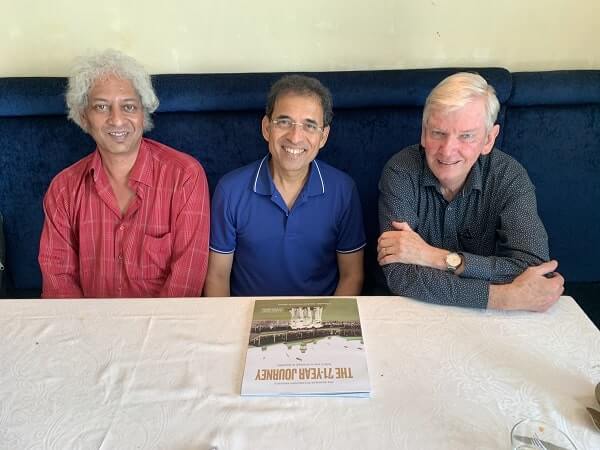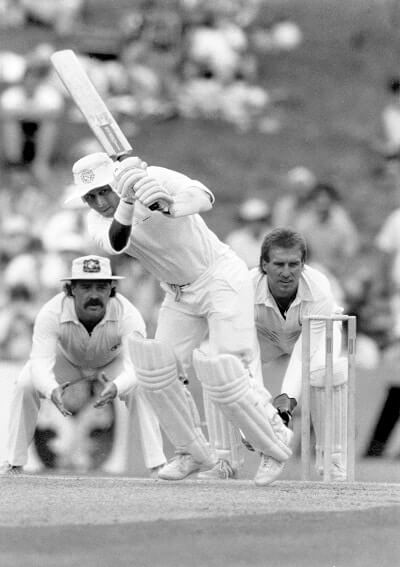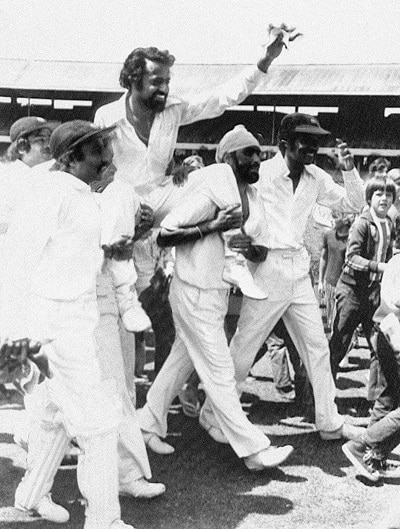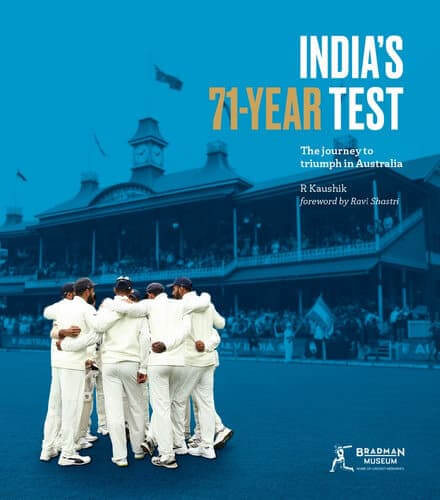For a sport with as storied a history as cricket, books on its past are unsurprisingly a dime a dozen. Given its origins, the game has always been blessed with extensive, often romanticised writings from some of the most eloquent doyens of the English language.
But long-established tradition has its foibles, and in the world of cricket publishing, the biggest of these is inaccessibility, with only the most ardent of cricket supporters likely to casually pick up a book traversing the game’s history.
India’s 71-Year Test, recently launched by former Indian all-rounder and current national team coach Ravi Shastri at the Sydney Cricket Ground, subverts the genre; it tells the history of Indian cricket in Australia primarily through an expansive collection of over 200 photos, many of which were rescued from the USA as part of the Holman Collection.
Taking the reader through a chronological, tour-by-tour journey of the history of the Indian cricket team in Australia, India’s 71-Year Test is perhaps one of the most visually stunning books ever in its category. Contrary to the usual modus operandi of cricket history books, where photos typically occupy a small section of dedicated glossy pages in the center of the book, India’s 71-Year Test is scattered with photos on each of its beautifully designed and large double-page spreads.

READ ALSO: Long-lost cricket archive brought back to life
This accessibility is one of the main reasons author R Kaushik expects the book to be successful in India. “In the last few years, the reading culture in India has mushroomed exponentially, and there is far greater literature on Indian cricket than used to be, say, even a decade back”, he says. “I am sure people will especially love the fabulous black and white pictures of legends from the past, though only time will actually tell how it is received here at home”.
The journey begins with a foreword by Shastri, who opens by saying, “Of all countries I’ve toured, Australia has easily been the best”. Shastri cites the quality of cricket, the facilities, the weather, the culture and the love of the game amongst the reasons he found tours of Australia both enjoyable and challenging. He comments also on the rarity of success in Australia: “As a professional sportsperson, you know that when you win the hard way, you command respect,” he writes.
It’s no wonder that Shastri has committed to provide copies of the book to every member of the Indian squad currently touring Australia.

Shastri’s foreword echoes both the theme and conclusion of the book, and indeed its genesis: that India’s achievement of winning its first-ever Test series on Australian soil on its 2018/19 tour was as big an achievement as any other in the nation’s sporting history, and deserved to be chronicled.
The main body of the book breaks into four sections: Initiation, covering India’s 1947/48 and 1967/68 tours, Progress, spanning 1977/78 to 1991/92, Confluence, covering 1996/97 to 2014/15, and Glory, describing the successful 2018/19 tour. It is in the earlier tours however, that the Holman Collection of photos truly shines.
Describing his favourite photos within the Holman Collection photo archive, former Cricket Australia chairman and Test player Wally Edwards (who funded the collection) says “I enjoyed all the photos of the old players, like Lala Amarnath. I can remember all these old players as a kid listening to the radio broadcasts, through to the early 1970s. [The photos] make you recap on your early life, seeing photos of people you knew only through radio”.

Some of the photo highlights in the book – and there are many – include the Australian and Indian teams with their heads bowed in respect during a two-minute silence for the passing of Mahatma Gandhi in 1948; BS Chandrasekhar being chaired off the field by teammates after his 12-wicket haul in 1977/78, handing India its first ever win on Australian soil; and a young Australian fan patting an ice-cold Bishan Bedi on the back after India defeated Australia by an innings for the first time on Australian soil, in the very next match after Chandrasekhar’s heroics.
Sir Donald Bradman once mused, “The game of cricket existed long before I was born. It will be played centuries after my demise”. If that is to prove correct, authors and publishers alike must continue targeting newer, wider audiences and do away with the “too niche” category into which many cricket books inevitably fall. India’s 71-Year Test does exactly that.
India’s 71-Year Test is available through various online retailers, including the Bradman Museum’s online store, and will be available in bookstores throughout Australia from mid-January.
READ ALSO: Steve Waugh’s India: where cricket gives hope and happiness




